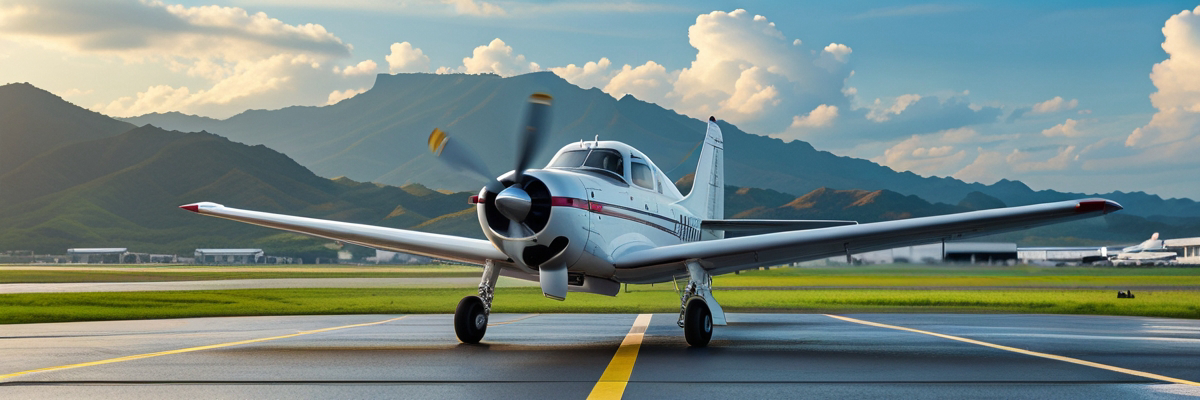
Flying in the vibrant skies of Okinawa, Japan, is an experience that blends the thrill of aviation with the awe of natural beauty. As a member of the Kadena Aero Club, I’ve had the pleasure of exploring this unique airspace, where every flight brings both challenge and exhilaration. The rhythmic hum of the Cessna engine, the vast azure sea below, and the complex airspace we navigate all add a distinctive character to each journey.
1. Understanding Local Airspace Regulations
Flying from Kadena Air Base involves navigating a unique tapestry of civil and military airspace. The FAR 91 mandates that we, as pilots, familiarize ourselves with the specific rules governing our planned flight path—a critical step given the multifaceted airspace over Okinawa. Much of this region falls under Class D airspace, interspersed with restricted zones due to military operations.
The Aeronautical Information Manual (AIM) is an indispensable resource, offering detailed insights into controlled airspace navigation and local traffic advisories. As a pilot here, constant vigilance and adept communication with air traffic control (ATC) are crucial. I recall one particularly illuminating flight when ATC instructions required rapid adjustments, reminding me of the challenges and learning opportunities inherent in this dynamic environment.
Getting Comfortable with ATC
Acclimating to regular and clear communication with ATC can transform potential stressors into routine engagements. I found that concise updates and familiarizing myself with standard protocols helped in creating smoother experiences, even when unexpected instructions arose.
2. Weather Patterns and Challenges
If there’s one thing that keeps me on my toes while flying in Okinawa, it’s the weather. The PHAK highlights the importance of understanding local weather patterns—a necessity in our oceanic locale where conditions can pivot quickly. One fascinating yet daunting aspect here is the microclimate effect, adding a layer of unpredictability to each flight.
My standard pre-flight ritual involves not just checking METARs and TAFs but also utilizing AWOS or ATIS at Kadena for the latest updates. I remember an instance when swiftly shifting weather prompted an unscheduled diversion to Yoron Island, a potent reminder of the unpredictability of Mother Nature. Experiences like these strengthen my resolve to be thoroughly prepared and adaptable.
Adapting to the Unpredictable
Having contingency plans, such as alternate airport options, is key when planning flights. Flexibility and vigilance in monitoring weather changes play vital roles in ensuring our flights remain safe and enjoyable, no matter the curveballs thrown our way.
3. Training and Proficiency Tips for Cessna Pilots
Mastery of flying in Okinawa demands continuous learning and adaptability. Even after earning your license, training remains an ongoing journey. The AFH serves as a guiding resource for practice drills, helping keep our skills polished. I often participate in club sessions focused on pattern work and simulated emergencies, which bolster my readiness for unforeseen challenges.
Joining the community of pilots at the Kadena Aero Club adds immense value. Sharing wisdom, experiences, and techniques not only solidifies our skills but also strengthens the bonds within this supportive circle. The mutual learning experience during these club exchanges is enriching and vital for growth.
Consistent Practice and Community Learning
Practicing fundamental maneuvers regularly keeps us sharp, while the camaraderie and observations during group flights further refine our situational awareness—a crucial aspect of flying safely and confidently.
4. Memorable Moments: A Sunset to Remember
Among the tapestry of flights, one in particular stands out—a spontaneous sunset tour around the Kerama Islands. The visual poetry of the setting sun casting golden reflections on the sea was a profound reminder of the magic of flight. It reaffirmed the purpose of flying, which transcends mere travel: it is about embracing the world from an extraordinary perspective.
Moments spent flying solo amidst such breathtaking scenery are incredibly humbling and uplifting. Each flight enriches my understanding of the sky and shapes my character, fostering patience and reverence—elements every pilot holds dear as they navigate the Okinawan skies.
5. Tips for Private Pilots
- Thorough Pre-flight Briefing: Start with a complete briefing, meticulously reviewing your flight plan and ensuring knowledge of current NOTAMs.
- Stay Current: Routine practice, including emergency scenarios, sharpens skills. Take advantage of club simulators and resources.
- Engage with the Community: Dive into club activities and discussions, sharing insights and soaking up the collective expertise.
Flying in Okinawa as a private pilot with the Kadena Aero Club is a journey defined by learning, beauty, and camaraderie. Each flight traverses challenging airspace and unpredictable weather, weaving lessons and crafting indelible memories. My hope is that these reflections and tips resonate with both veteran aviators and newcomers, inspiring a zestful and safety-conscious approach to every flight.
Ultimately, as we take to the skies, we welcome a series of adventures and challenges that glorify our aviator spirit. It’s the harmonious blend of skills, knowledge, and passion that characterizes our journey with the Kadena Aero Club, where the skies over Okinawa become our ever-evolving, beautiful classroom.
Leave a Reply